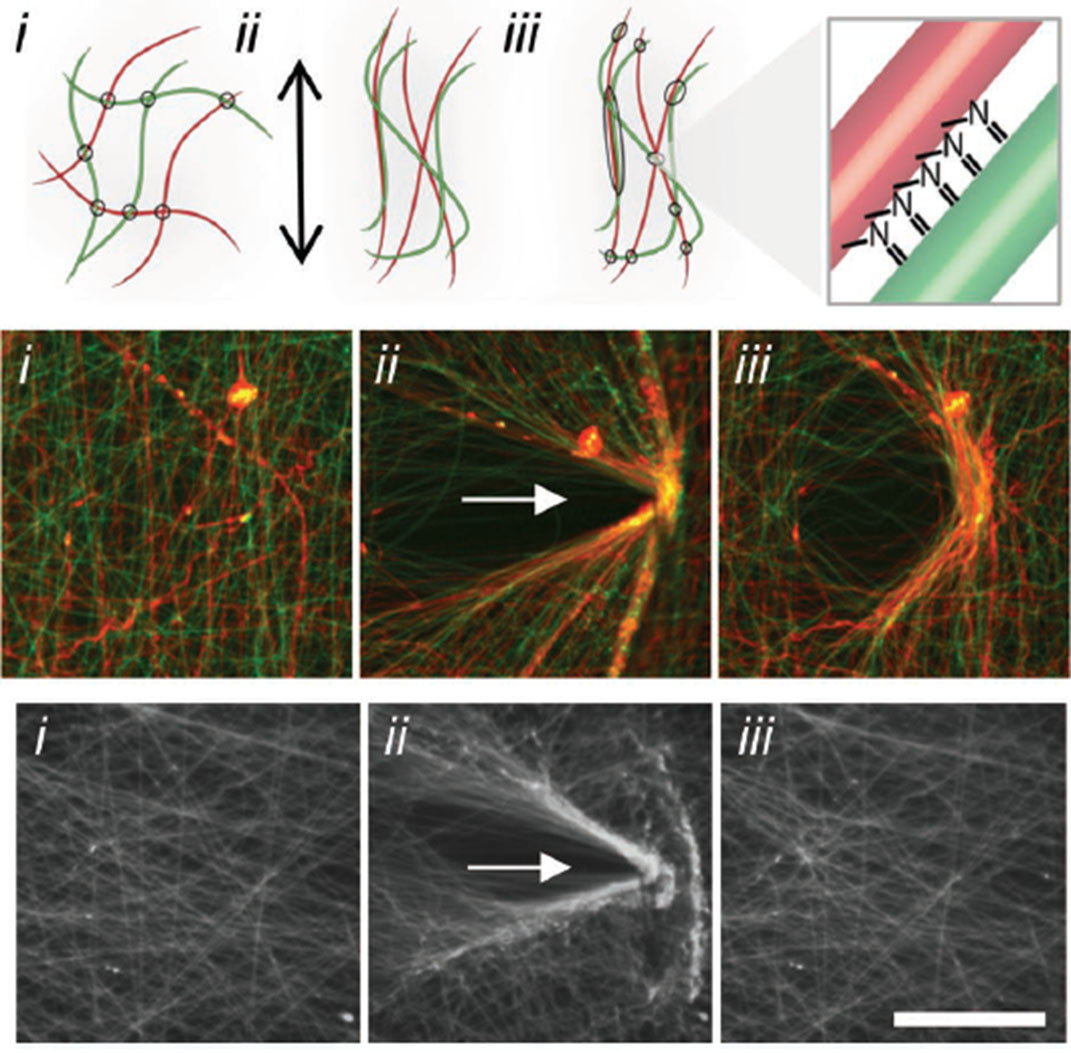 Burdick and Shenoy have designed synthetic actively remodeling networks using electrospun fibers containing reactive groups that form covalent crosslinks at sites where fibers are brought together by localized strains. This approach uses the fibers of hyaluronic acid modified with either hydrazides (red) or aldehydes (green). The hydrazides and aldehyde groups permit new interfiber reactions when fibers are brought into contact. When a local strain (ii) is imposed on an originally isotropic network (i) green and red fibers are pushed together and crosslinks form between fibers. These fibers remain associated after the force is removed (iii). When the hydrogel contains only unmodified fibers (lower panel) the network responds to local force in a similar manner (compare (ii) to (i)), but returns to its initial state after the force is removed (iii). These systems can lead to a range of new force adaptive materials that can remodel in a manner similar to that by which natural tissues remodel in response to mechanical stress.
Burdick and Shenoy have designed synthetic actively remodeling networks using electrospun fibers containing reactive groups that form covalent crosslinks at sites where fibers are brought together by localized strains. This approach uses the fibers of hyaluronic acid modified with either hydrazides (red) or aldehydes (green). The hydrazides and aldehyde groups permit new interfiber reactions when fibers are brought into contact. When a local strain (ii) is imposed on an originally isotropic network (i) green and red fibers are pushed together and crosslinks form between fibers. These fibers remain associated after the force is removed (iii). When the hydrogel contains only unmodified fibers (lower panel) the network responds to local force in a similar manner (compare (ii) to (i)), but returns to its initial state after the force is removed (iii). These systems can lead to a range of new force adaptive materials that can remodel in a manner similar to that by which natural tissues remodel in response to mechanical stress.
Davidson, M.D., E. Ban, A.C.M. Schoonen, M.-H. Lee, M. D'Este, V.B. Shenoy, and J.A. Burdick. 2020. Mechanochemical Adhesion and Plasticity in Multifiber Hydrogel Networks. Advanced Materials. 32.